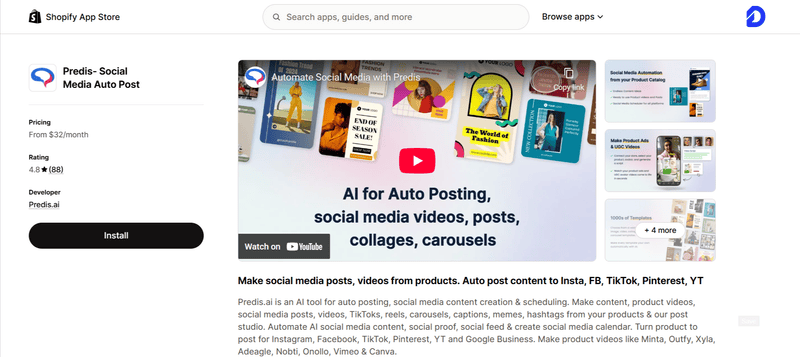
Warranty management is a critical aspect of any brand's customer service strategy. It not only ensures customer satisfaction but also plays a vital role in building brand loyalty and reputation. In this comprehensive guide, we will discuss various aspects of managing warranties from a brand perspective, including the importance of warranties, types of warranties, best practices for warranty management, and how to effectively handle warranty claims.
Contents
- Importance of Warranties:
- 1. Building Trust and Confidence
- 2. Differentiation and Competitive Advantage
- 3. Brand Reputation and Loyalty
- Types of Warranties:
- Best Practices for Warranty Management:
- Handling Warranty Claims:
- Dyrect providin the best warranty management solution customise just for your brand:
- Conclusion
Importance of Warranties:
Warranties are promises made by a brand to its customers regarding the quality and performance of its products. They provide consumers with confidence in the reliability of the product and offer protection against defects or malfunctions. From a brand perspective, warranties serve several important purposes:
1. Building Trust and Confidence
Offering warranties demonstrate a brand's confidence in its products and commitment to customer satisfaction. It reassures customers that the brand stands behind its products and is willing to address any issues that may arise.
2. Differentiation and Competitive Advantage
A strong warranty can differentiate a brand from its competitors and serve as a key selling point. Brands that offer longer or more comprehensive warranties may attract more customers and command premium prices for their products.
3. Brand Reputation and Loyalty
Effective warranty management can enhance brand reputation and foster customer loyalty. Brands that honor their warranty commitments and provide timely and hassle-free service are more likely to earn positive reviews and repeat business from satisfied customers.
Types of Warranties:
There are several types of warranties that brands may offer to their customers. The most common types include:

1. Manufacturer's Warranty
This type of warranty is provided by the manufacturer and typically covers defects in materials and workmanship for a specified period after the purchase date. Manufacturer's warranties may vary in duration and coverage depending on the product and brand.
2. Extended Warranty
An extended warranty is an optional coverage that customers can purchase to extend the duration of the manufacturer's warranty. Extended warranties may offer additional benefits, such as coverage for accidental damage or product replacement.
3. Limited Warranty
A limited warranty specifies certain limitations or exclusions on the coverage provided. For example, a limited warranty may only cover certain parts or components of the product, or it may require the customer to meet certain conditions or pay a deductible for warranty service.
Best Practices for Warranty Management:
Effective warranty management is essential for maintaining customer satisfaction and protecting the brand's reputation. Here are some best practices for managing warranties from a brand perspective:
- Clear and Transparent Warranty Terms: Brands should clearly communicate warranty terms and conditions to customers at the time of purchase. This includes specifying the duration of the warranty, what is covered, and any limitations or exclusions.
- Streamlined Warranty Registration Process: Implementing a simple and user-friendly warranty registration process can encourage customers to register their products and ensure that they receive timely warranty service if needed.
- Efficient Warranty Claim Handling: Brands should establish efficient processes for handling warranty claims, including quick response times, clear communication with customers, and prompt resolution of issues. This may involve providing easy access to customer support channels, such as phone, email, or online chat.
- Training and Empowering Customer Service Representatives: Customer service representatives play a crucial role in managing warranty claims. Brands should invest in training and empowering their customer service teams to effectively handle warranty inquiries and provide excellent service to customers.
- Continuous Improvement: Brands should regularly evaluate their warranty management processes and seek feedback from customers to identify areas for improvement. This may involve monitoring warranty claim trends, analyzing customer feedback, and implementing changes to enhance the overall warranty experience.
Handling Warranty Claims
When it comes to handling warranty claims, brands should strive to make the process as smooth and hassle-free as possible for customers. With time and technology growth, there are solutions available readily for the brand that can be used easily, which will not only make the claims management process easier but also offer other perks or benefits. We will talk about them later, but for now, here are some key steps to effectively handle warranty claims:
1. Verify Warranty Coverage: Before proceeding with a warranty claim, verify that the product is still covered under warranty and that the issue is eligible for warranty service.
2. Collect Necessary Information: Gather relevant information from the customer, including proof of purchase, product serial number, and a description of the issue.
3. Provide Options for Resolution: Offer customers options for resolving the issue, such as repair, replacement, or refund, based on the terms of the warranty and the nature of the problem.
4. Communicate Clearly and Timely: Keep the customer informed throughout the warranty claim process, providing updates on the status of their claim and any actions taken to resolve the issue.
5. Follow Up: After the warranty claim has been resolved, follow up with the customer to ensure their satisfaction and address any remaining concerns.
Dyrect providing the Best Warranty Management Solution customized just for your business
Dyrect is known for its warranty management solutions, and we take immense pride in saying that we truly stand by it and we try to offer the best of the benefits in our solutions. With the warranty management solution, Dyrect's aim was to provide profitable opportunities for businesses, where they not only are getting a solution that handles claims but also a solution that eventually helps in increasing revenues while decreasing expenses.
Our solution:
- Reduce chargebacks and promote omnichannel communications
- Validates each claim to prevent frauds and optimize claim process
- Reduce overhead costs and give real-time reports & analytics
- Organises claim tickets & so much more….
What are you waiting for? Go ahead and check out the solution yourself. And I assure you that you'll be finding some of the best features that will help your business survive, thrive, and expand even better.
Conclusion
Managing warranties effectively is crucial for brands to maintain customer satisfaction, build loyalty, and protect their reputation. By understanding the importance of warranties, implementing best practices for warranty management, and handling warranty claims with efficiency and professionalism, brands can ensure a positive experience for their customers and strengthen their brand image in the marketplace.


